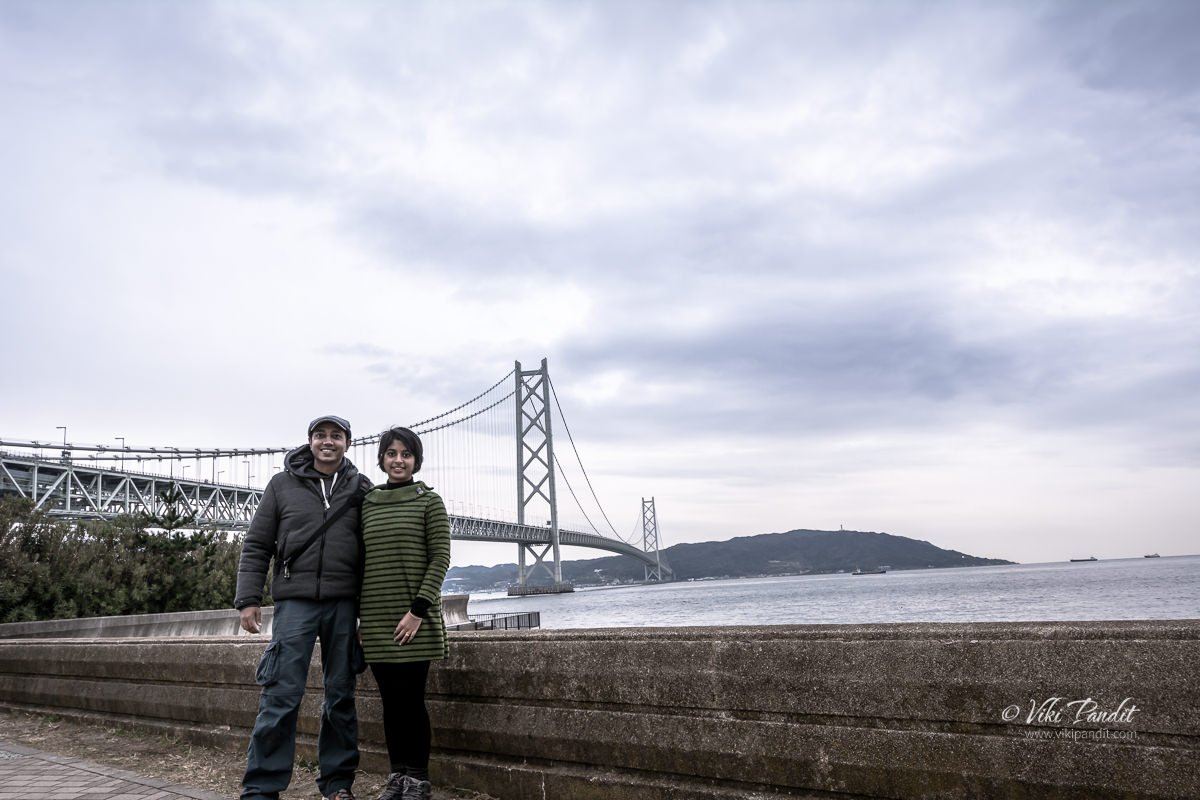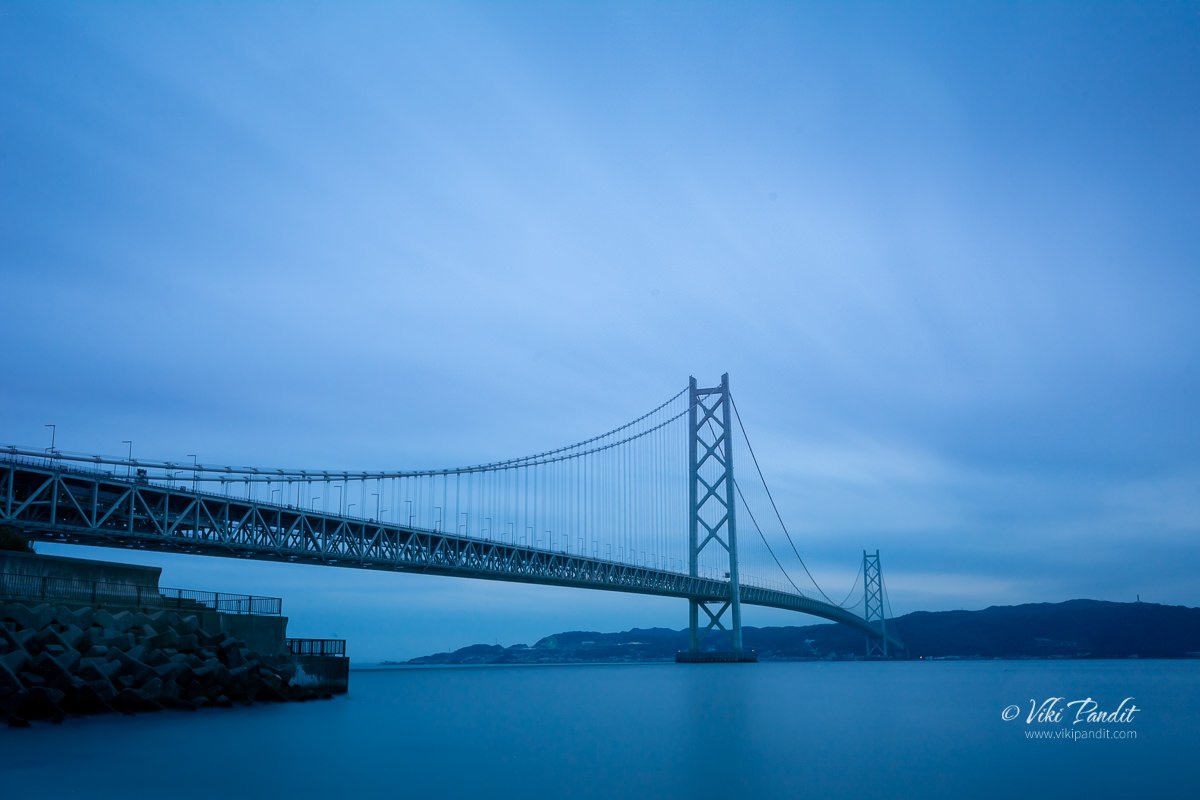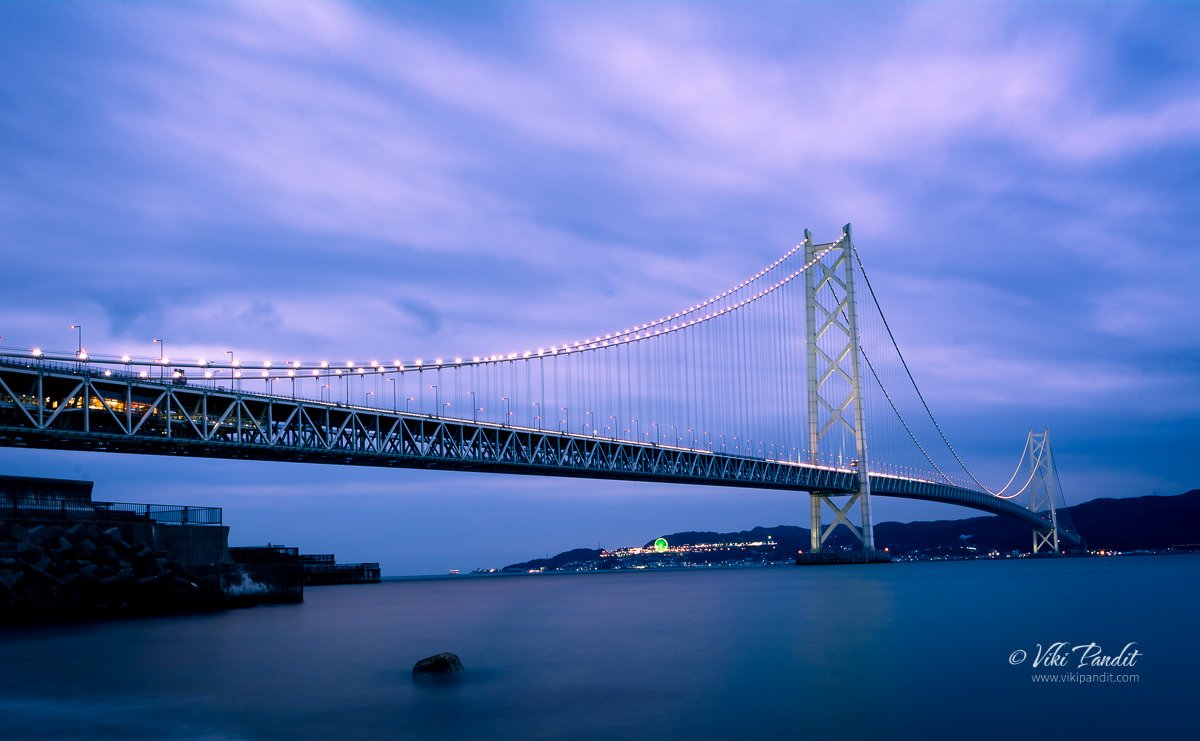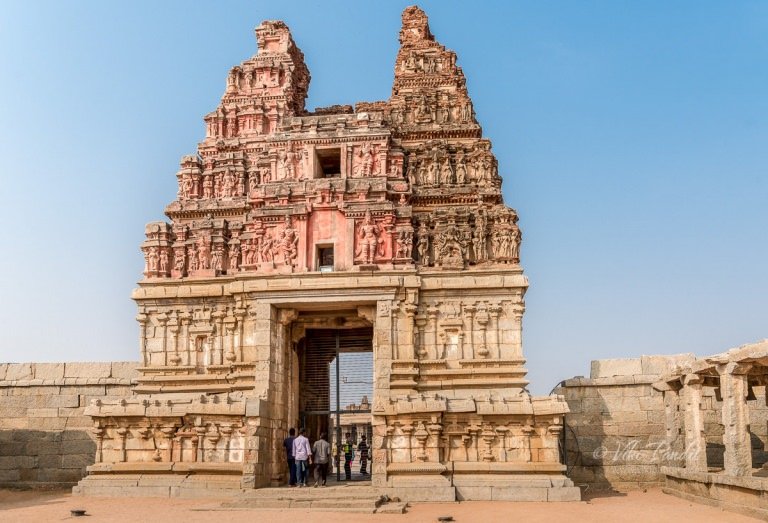The Akashi Kaikyo Bridge, with a length of almost four kilometers, is the world’s longest suspension bridge. Opened in 1998, it spans the Akashi Strait (Akashi Kaikyo) between Kobe and Awaji Island and is part of the Kobe-Awaji-Naruto Expressway.
Prior to the bridge’s construction, the strait was considered one of the world’s most dangerous waterways. For instance, in 1955 a severe storm caused two ferries to sink resulting in the deaths of 168 people.
How to get to Akashi Kaikyo
If you are coming from Osaka, you have to get down at the Maiko Station, on the Sanyo Line. Shinkansen trains don’t stop here, you have to use a local train. I had purchased a Kansai Wide Pass. If you want to stop at various stations just to take photos this pass makes it very cheap to travel around the Kansai region.
Once you come out of the Maiko station, you will have to cross the road and walk past the Akashi Kaikyo Bridge Exhibition Center on the left. A few meters away a small lane goes right to the edge of the Akashi Strait.
It took 180,000 tonnes of steel to complete the Akashi Kaikyo Bridge
It is a substantial 6-lane road bridge that connects Kobe on the main island of Honshu with Iwyaya on the smaller Japanese island of Awaji. This, in turn, is linked to the island of Shikoku via the Ōnaruto Bridge over the Naruto Strait.
The bridge was originally planned by the Japanese National Railways (now JR) in the mid-1950’s, as part of a rail link between the islands of Honshu and Shikoku. In 1975, after an exhaustive study, the Japanese government elected to build JR’s bridge, the Seto Bridge, over a much shorter span closer to Okayama. If you have been to the island of Shikoku by rail, you must have already used this route.
About 300,000 kilometers of cabling was used in the bridge’s construction
The length of the bridge alone presented a tremendous challenge to the engineers, but that wasn’t the only issue they had to face in designing this monumental structure. For one, the bridge also had to be tall enough to let boat traffic in the strait pass unimpeded.
As the bridge stands in a seismically unstable part of the world, engineers also needed to ensure its design would stand the test of time. To this end, the bridge includes a complex system of counterweights, pendulums, and steel-truss girders that allow the bridge to withstand wind speeds of up to 290 km/h. The foundation depth of the bridge is equivalent to that of a 20-storey apartment. Yet despite its inherent strength, the bridge is also able to expand and contract several times a day.
The rocky bank is a beautiful spot to take a shot of the lovely bridge. I had reached the spot at around 5 pm. The bridge is exactly 3,911 meters long, has three spans supported by two main supporting towers that stand 297 meters apiece and a series of anchoring cables. This makes Akashi Kaikyo Bridge also one of the world’s tallest.
Light was pretty bright. At first I took some shots with a 10-stop ND filter. They came out okay. I wasn’t too excited to see the results since the skies had no drama.
The bridge is used by around 25,000 cars everyday
How I took captured Night View of Akashi Kaikyo Bridge
After that I walked further west along the coast but couldn’t find a better spot, so I walked back to the earlier spot and waited for the lights to come on and then took this shot. I used the 10-24mm nikkor at 24mm on my Nikon D7100. I lowered the aperture to F16 to slow down the shutter speed to get the water to look smooth.
The Akashi–Kaikyo bridge has a total of 1,737 illumination lights!
The Akashi–Kaikyo bridge has a total of 1,737 illumination lights: 1,084 for the main cables, 116 for the main towers, 405 for the girders and 132 for the anchorages. Sets of three high-intensity discharge lamps in the colors red, green and blue are mounted on the main cables. The RGB colour model and computer technology make for a variety of combinations.
Ten years (1988 -1998)
Akashi Kaikyo Bridge
The Akashi Kaikyo Bridge is called the ‘Pearl Bridge’ because of the 28 different patterns and various colors of lights used to illuminate her at night. When illuminated it gives the appearance of beautiful pearls on a necklace.
Honshu Shikoku Bridge Authority
April 5, 1998
Disclaimer: The information presented in this article is based on the time I visited the premises. Note that there might be changes in the prices of merchandise and admission fees that might have occurred after this article was published. At times the facility might also be closed for repairs or for variety of other reasons. Kindly contact the facility or facilities mentioned in this article directly before visiting.
Usage of this site indicates acceptance of my Terms and Conditions.
Credits: The historical information presented herein is gathered mostly from local guides that were re-inforced via historical writings.







